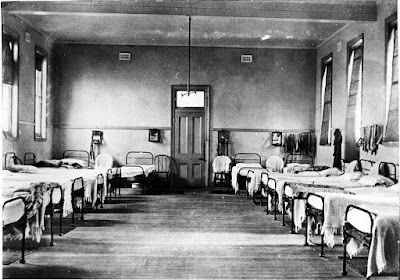Without the coming of the railway to Armidale in 1883, the city could not have maintained its developing position as an educational centre. The railway also became a major local employer. But while the railway gave it also took away.
It is hard now to think of Armidale as a manufacturing centre, but by the coming of the railway it had developed its own small industrial base spreading to the west near the junction of Martin’s Gully and Dumaresq Creek and then along Dumaresq Creek towards the centre of the city. In all cases, access to water was central.
Industries included tanning, boot manufacturing, soap making, blacksmithing, brewing and flour milling. To the south and west of Armidale lay a belt of farming territory that fed grains to the local mills.
The railway gave local industry the chance to export product to broader markets, but also exposed local producers to outside competition. One by one, local manufacture shut down.
In brewing, the railways brought mass produced beer from Sydney along the railways spreading out from that city, closing the many locally produced beers across Northern NSW.
The railways also brought milled flour from as far away as South Australia. Neither local wheat growers nor local millers could compete. Similar things happened with other locally manufactured products.
Armidale had been a much bigger centre than Tamworth where the Australian Agricultural Company’s large land holdings had prevented growth. As the land opened up and farming grew, so did Tamworth.
By 1901, Tamworth’s population exceeded Armidale’s by 1,550 people. At the 1911 census, that gap had grown to 2,407 people.
Inverell had been growing from the combination of farming expansion and industrial activities servicing the tin and other mines on the Western side of the Tablelands. In 1901, its population was 956 less than Armidale’s. At the 1911 census, that gap had closed to 189 people.
Glen Innes, too, had grown quite rapidly. At the 1901 census, its population was 1,331 less than Armidale’s. At the 1911 census, Glen Innes was only 189 people behind.
Armidale’s problem lay in its small economic catchment area compared to other regional centres. Effectively, the city’s only sources of income were as a rural service centre serving the grazing industries of part of Southern New England combined with its role as a religious, administrative and educational centre.
By 1922, the city had some of the grand buildings that would later form part of its visitor attractions but was effectively in stagnation. Now came events that would put it on a growth path that would last to the 1980s.
Note to readers: This post was prepared as a column for the on-line edition of the Armidale Express. I am repeating the columns here with a lag because they are not all on line outside subscription. You can see all the Belshaw World and History Revisited/History Matters columns by clicking here for 2009, here for 2010, here for 2011, here for 2012, here for 2013, here for 2014, here for 2015, here for 2016, here 2017, here 2018, here 2019, here 2020, here 2021












